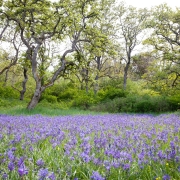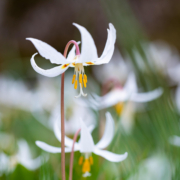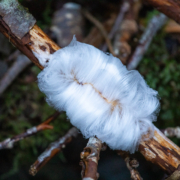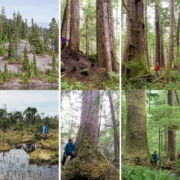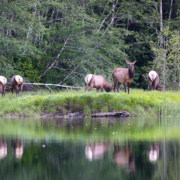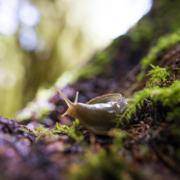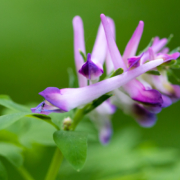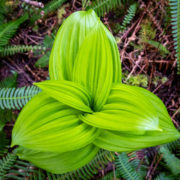Camas Lily
The emblem of an endangered ecosystem, of deep cultural significance, and simply gorgeous, the camas lily is one charismatic plant. This flower, native to the Garry oak ecosystem of southeastern Vancouver Island is instantly recognizable for its glorious blue-purple flowers that can blanket whole meadows in springtime.
There are two species of blue camas on Vancouver Island — the common camas and the great camas — separated by size and the arrangement of the petals, which on the great camas twist together. Neither should be confused with death camas though, a white flowering species with bulbs that can be lethal to consume.
For the Coast Salish people, camas have traditionally been no mere ornament but a way of life. Indeed, it was considered second only to the all-important Pacific salmon in its importance in trade on the coast. This is because the rich, starchy bulb of the camas is a fantastic source of carbohydrates, traditionally filling the role of potatoes, bread, or rice in other cultures. Camas bulbs would be cooked in pit ovens for 24–48 hours to allow the complex starches to become sweet and easily digestible.
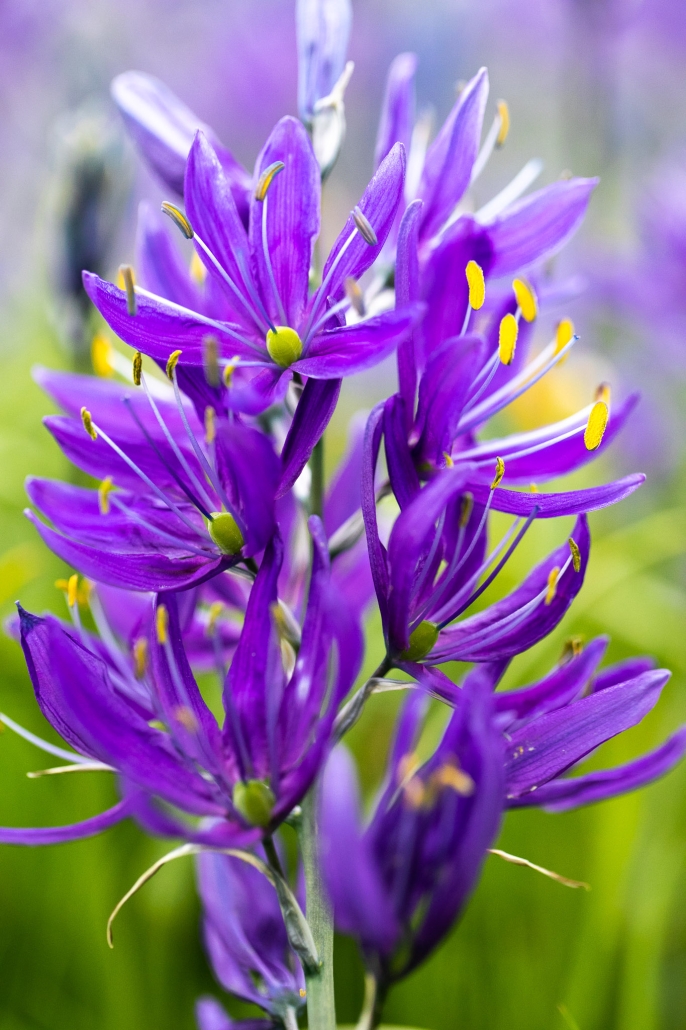
Traditionally, Indigenous camas harvesters have not been passive consumers of a wild plant, but instead active cultivators of camas meadows, including carrying out controlled burns to maintain the oak savannahs where camas thrive. Archaeological research suggests that Indigenous people in North America have been cultivating camas ecosystems for at least 3500 years, a legacy of care and stewardship that has helped maintain this biodiverse ecosystem and all the creatures that depend on it.
Today, due to development for housing and agriculture, Garry oak ecosystems are among the most threatened habitats in Canada.
To see some of the best camas displays this spring, visit one of the beautiful meadows at Uplands Park, Summit Park, or Beacon Hill in Victoria (late April/early May are the best times). Here, one can still wander among the fields of flowers and be reminded of the interwoven human relationship that goes back thousands of years 💜

